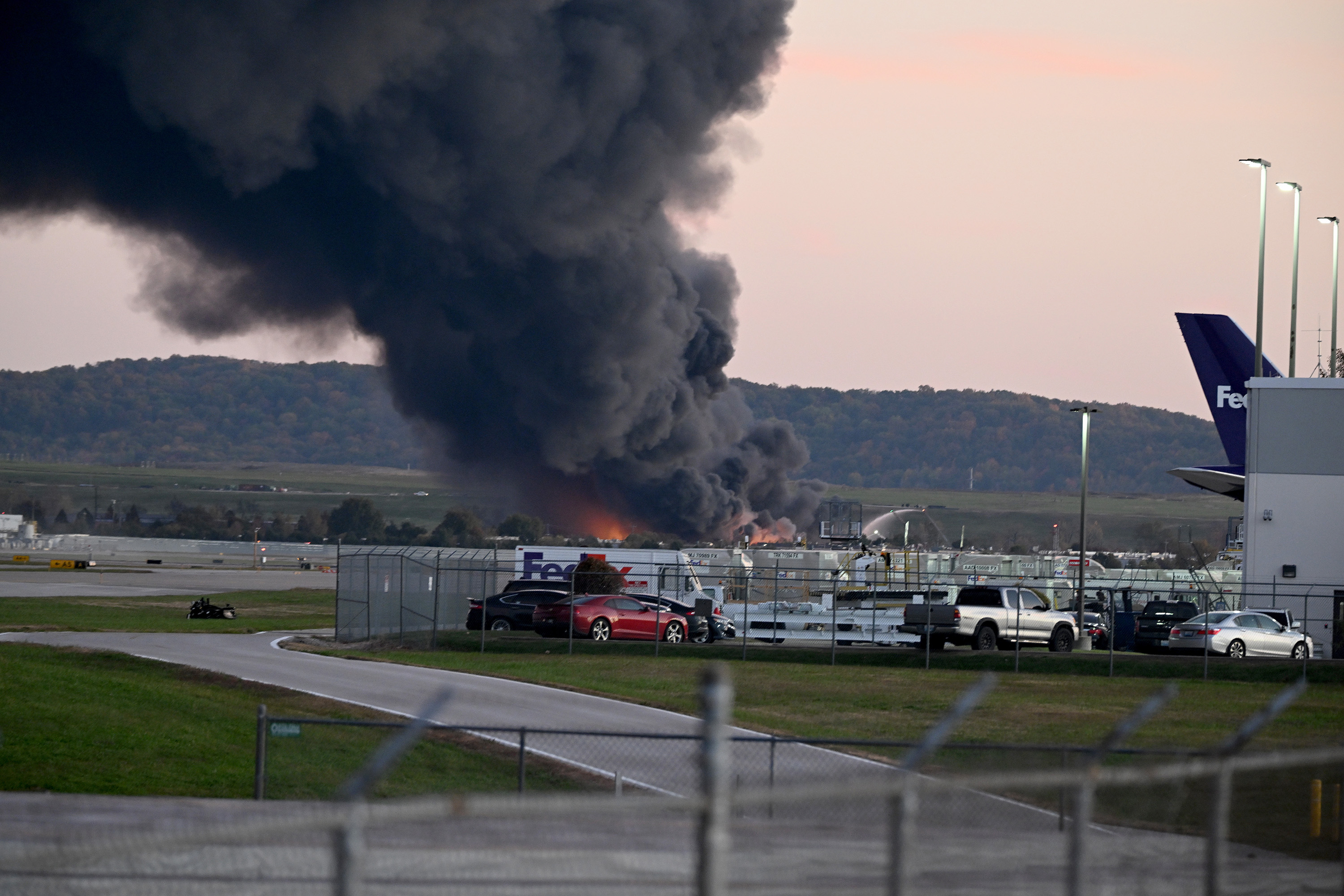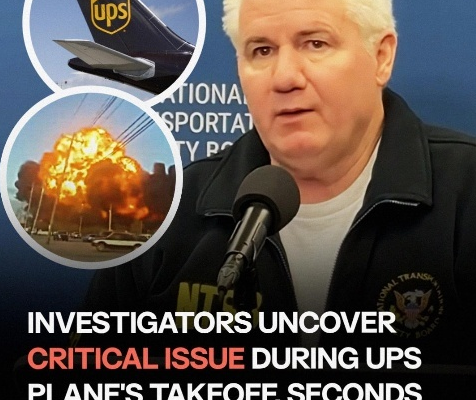National Transportation Safety Board (NTSB) Shares Early Findings on the UPS Airlines Flight 2976 Crash Near Louisville

On 4 November 2025, the cargo aircraft McDonnell Douglas MD‑11F operating as UPS Airlines Flight 2976 crashed shortly after takeoff from Louisville Muhammad Ali International Airport (SDF) in Kentucky. The National Transportation Safety Board (NTSB) has released initial findings pointing to an engine separation and fire during the take-off roll. The investigation is ongoing, and the full causal report may take 12 to 24 months.
1. What Happened
-
The aircraft was a cargo flight from Louisville to Honolulu, Hawaii.
-
The crash occurred around 5:15 p.m. local time.
-
During the take-off roll, CCTV footage reviewed by the NTSB shows the aircraft’s left engine detaching from the wing. “The left engine detaching from the wing during the take-off roll,” said NTSB Board Member Todd Inman.
-
After liftoff, the aircraft cleared the runway end-fence but then crashed into structures off airport property
-
The debris field stretches for nearly a half-mile, covering multiple buildings and ground structures
2. Casualties and Impact
-
At least 11 people were confirmed dead in early reporting, and the toll is expected to rise.
-
According to later reports, the death toll reached 12, including at least one child.
-
At least 15 people were reported injured.
-
The crash also caused extensive ground damage — buildings hit by the aircraft, fires, and a long trail of debris.
3. Preliminary Technical Observations
-
The key technical anomaly: separation of the left-wing engine during the take-off roll. This is exceptionally rare and immediately flagged as critical.
-
A fire developed in the left wing during the take-off roll.
-
The aircraft was fully loaded for a trans-Pacific flight, carrying tens of thousands of gallons of fuel, which exacerbated the fire and post-crash damage.
-
The cockpit voice recorder (CVR) and flight data recorder (FDR) were recovered and appear to be intact, which gives hope for detailed insights.
4. Investigation Process
-
The NTSB dispatched a “go-team” of investigators to the site.
-
The investigation will examine video footage, maintenance records, aircraft history, debris patterns, structural evidence, and materials.
-
The NTSB emphasized no speculation on probable cause yet — they are still collecting and analyzing evidence.
-

Preliminary findings may be released soon (often within ~30 days), but the final report including probable cause and recommendations may take 1-2 years.
5. Aircraft and Operator Background
-
The aircraft was a McDonnell Douglas MD-11F, a freighter variant originally delivered in 1991 and operated by UPS
-
The operator, UPS Airlines, expressed condolences and cooperation with authorities.
-
UPS temporarily suspended operations at its Louisville hub (Worldport) and halted some services in the immediate aftermath.
6. Community and Operational Aftermath
-
Local authorities declared a state of emergency for parts of Louisville adjacent to the crash site.
-
The airport remained partially closed, with the runway used for take-off closed for an extended period.
-
The impact zone included industrial buildings and resulted in serious structural damage and fire, raising additional safety and environmental concerns.
7. Safety Implications and Wider Significance
-
When an engine detaches during takeoff, it indicates a catastrophic structural or mechanical failure. For aviation safety, this is among the most serious types of incident.
-
The investigation will likely examine the engine-attachment structure, maintenance history, manufacturing integrity, fatigue or corrosion, runway conditions, and possible in-flight vibrations or abnormal stresses.
-
Findings from the investigation could lead to airworthiness directives or engine/aircraft system inspections across similar fleets, especially those using the MD-11F or the specific engine model involved.
-
The high fuel load and crash into ground structures underline the risk of cargo flights operating with heavy loads near populated or industrial zones. The hazard to ground personnel and infrastructure becomes a focal point.
-
The event will reinforce the importance of runway safety zones, emergency response readiness for cargo aircraft operations, and monitoring of aging freighter aircraft fleets.
8. What We Don’t Know Yet
-
The exact mechanical failure mode (engine bearing break, fan disk rupture, mounting bolt failure, structural fatigue) is not yet identified.
-
Whether the fire began first or the engine separation triggered the fire (or vice versa) remains under investigation.
-
The role of any human factors (crew response, maintenance oversight, loading procedures) is still to be evaluated.
-
Whether design issues specific to this aircraft or fleet-wide implications will emerge.
-
The final number of fatalities and injuries, including ground victims, remains to be confirmed as recovery continues.
9. Why This Matters
-
Each major aircraft incident leads to safety recommendations that prevent future tragedies. The NTSB’s process — though slow — is crucial in enhancing aviation safety.
-
Cargo operations are a vital part of the global economy, and freighter aircraft often fly heavier loads, older models, and into industrial hubs — increasing risk exposure. A failure of this nature underscores the need for vigilant oversight.
-
The lessons learned here may apply not only to UPS or the MD-11 fleet but potentially to any aircraft where engine mounting, maintenance, or fatigue issues may exist.
-
The tragic loss of life — crew members, ground personnel, possibly others on the ground — is a stark reminder of the human dimension behind aircraft safety.
10. Next Steps
-
The NTSB will continue its on-site investigation, likely staying at the scene for at least a week as evidence is collected and documented.
-
Engines, wing structures, and other large components will be examined in detail at labs, including the flight recorders.
-
Regulatory and manufacturer partners (e.g., Boeing/McDonnell-Douglas) will assist with technical analysis
-
Interim updates may be provided in the coming days, but final conclusions will wait until full data analysis is complete.
-
Based on findings, if risks are identified, safety recommendations may be issued for inspections, design reinforcements, maintenance procedures, or operational restrictions.
Conclusion
The early report from the NTSB into the UPS Flight 2976 crash near Louisville highlights a dramatic and rare failure scenario: an engine physically detaching during the take-off roll. While many questions remain unanswered, the pieces of evidence already recovered — from the black boxes to the engine wreckage and debris field — offer hope for clarifying what went wrong.
In the coming months, investigators will sift through maintenance logs, structural analyses, flight data, and human factors to establish how and why this failure occurred — and, importantly, how to prevent something similar in the future.
As families grieve and the disruptions to cargo operations ripple outward, the ultimate goal remains clear: transform tragedy into knowledge, so that aviation becomes safer for all.


